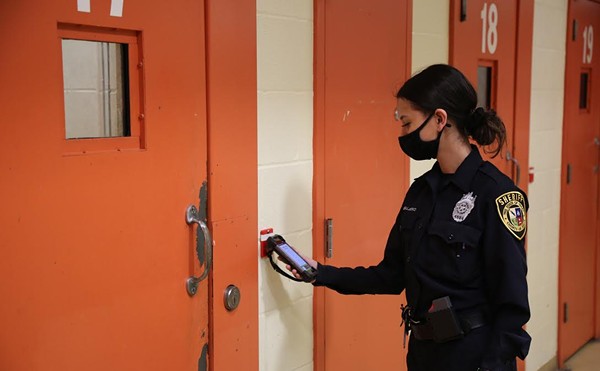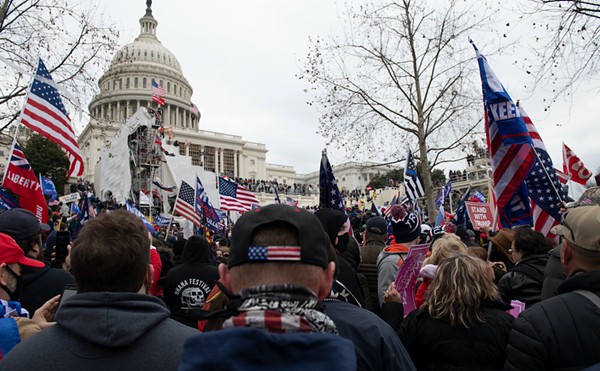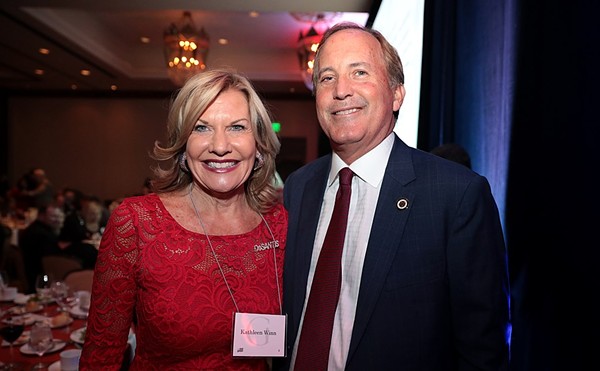For a month now, thousands of workers have been applying to work at a new Amazon warehouse in Schertz. The City of Schertz paid $7.6 million in subsidies to the mega-corporation in order to secure the 1.26 million-square-foot warehouse that will bring “good job[s] in a durable, growing industry” according to a recent speech from President Obama, delivered at an Amazon fulfillment center (company lingo for ‘warehouse’) in Tennessee.
But what kind of jobs is Amazon really bringing? Horror stories from Amazon plants around the country have come to light. In a 2011 exposé on a local Amazon warehouse, Lehigh Valley, Penn.’s Morning Call revealed that the building was so hot in the summer that the company paid for ambulances to wait outside the building to treat workers. An emergency room doctor eventually called federal regulators to report an “unsafe environment” at the warehouse.
The Seattle Times reported last year on working conditions at an Amazon warehouse in Kentucky where workers were intimidated into not reporting injuries that might hurt Amazon’s safety record. A former human resources employee told the paper, “They would have meetings on how we could get rid of people who were hurt. It was horrible.” A former safety officer added, “This was just a brutal place to work.”
Reports of abuse by Amazon are not confined to the United States. Earlier this year, a German documentary revealed that Amazon hired a neo-Nazi-linked security firm named H.E.S.S. (an allusion to Nazi deputy-Führer Rudolf Hess) to watch workers at its warehouse in Southern Germany. The neo-Nazi security guards engaged in widespread abuse against the largely immigrant workforce brought in to handle the holiday rush.
Certainly not all the jobs offered by Amazon are nightmares. An Indiana worker interviewed for this article reported that she enjoyed her job, but it didn’t take long before she began to tell of coworkers who did not fare so well: a woman who had blisters on her feet so painful that she had to crawl into her house at night and an army veteran whose legs chafed so badly at work that they bled.
The jobs that Amazon offers largely consist of people filling bins at the warehouse (inbound) and people taking things out of those bins to pack in boxes (outbound). The pace of work is extremely fast and workers regularly walk 15 miles a day doing their job. The pay is low, averaging between $10.75 and $12.50 per hour for Amazon workers and less for the temps who make up the majority of the workforce. Amazon stresses flexibility, meaning that the hours are highly contingent upon mass hiring around high volume times like Christmas only to be followed by mass layoffs shortly after.
In an economy where people are just happy to have a job, the potential for exploitation is seemingly limitless. The woman working in Indiana ran her own business before it became a victim of the economic crisis, sending her into the arms of Amazon. She isn’t the only one; members of her family have also found it necessary to seek employment in the warehouse.
Not surprisingly, as workers have become more desperate, employers have become more predatory. Texas, with its anti-union atmosphere and lax to non-existent labor standards, is a low-wage haven for Amazon. Correspondingly, wages for Amazon workers in Texas are lower than in any other state.
Right now fulfillment associates (the most common warehouse position) are paid $10.75/hour which amounts to a yearly income of $22,360 assuming full-time employment, which at Amazon is a big assumption. Another way to put this is that those “middle-class” jobs that Amazon offers pay $1,190 below the federal poverty line for a family of four. Still another way to look at it is that Amazon is paying Texas workers an hourly wage that is only one cent above the minimum wage offered in 1968, adjusted for inflation. Amazon isn’t coming to Schertz to uplift Texas workers; it is coming here to exploit them.
To be fair, Amazon is hardly the lone actor in this situation. One of the better-known pieces of investigative journalism about the reality behind the online shopping juggernaut, Mac McLelland’s 2012 undercover piece “I Was a Warehouse Wage Slave” for Mother Jones followed the author as she worked for a warehouse that fulfilled orders for several different online retailers. McLelland described an atmosphere of 10- or 12-hour shifts of speed-walking or outright jogging to complete her “inbound” work targets, split up by two 15-minute breaks and a 30-minute lunch. Like Amazon often does, that warehouse used a temporary staffing company to hire many workers, keeping some of the worst charges against working environments leveled at the staffing company, rather than the retailer.
Many companies providing these so-called “middle-class” jobs have used the economic recession as an excuse to cut wages, which led to them realizing record profits. According to the National Employment Law Project, most of the jobs lost since 2008 paid between $13.53 and $20.66 an hour while the majority of the jobs gained in the same period paid between $7.51 and $13.52. This disaster for workers has been a boon for the top 1 percent of income earners who took in 93 percent of income gains in the first years of the “recovery.” That’s a hard business model to back out of, even as the economy slowly rights itself. With this in mind, Obama appears to be right in saying that Amazon jobs represent the future of work in America, but he is dead wrong in implying that these are good, middle-class jobs.
“We’re not going to make our customers pay for any of our inefficiencies.” With these words Amazon head Jeff Bezos joined with companies like Wal-Mart to lay the blame for their deteriorating work conditions on consumers. They argue that consumers demand products faster and cheaper, forcing them to lower wages and push workers harder (and “forcing” companies to collect massive profits in the process). This line of reasoning appeals to many—the customer is always right, and these practices help ensure customer service—but lets CEOs slip off the hook in terms of creating an ethical, or at least safe, work environment.
To understand the motivation behind Bezos’ management of Amazon, it is worth taking a look at his second great innovation, Mechanical Turk. Mechanical Turk is the first ever digital sweatshop—excuse me, “microtasking site”—where workers compete in an unregulated digital marketplace to perform very small tasks (such as identifying duplicate web sites) for literal pennies. These tasks would have normally been done by a regular worker paid at least minimum wage and afforded some workplace protections. With the Turk, workers are paid $1.25 to $2 per hour and are guaranteed nothing, not even that companies will pay them for their work.
Like Amazon’s warehouses, the conditions at Mechanical Turk are market-driven. But the new facility in Schertz, like many others around the country, receives public incentives. In essence, taxpayers are paying Amazon for the privilege of shaky employment, harsh working conditions and measly paychecks.
Workers in the San Antonio area need jobs, but does that mean they deserve these jobs? Once upon a time a good, middle-class job meant stable employment and a paycheck that put families well above the federal poverty line. That is not the deal that Amazon is offering.


















